SONIC ADVENTURE DX
NINTENDO GAMECUBE AND PC (2003)
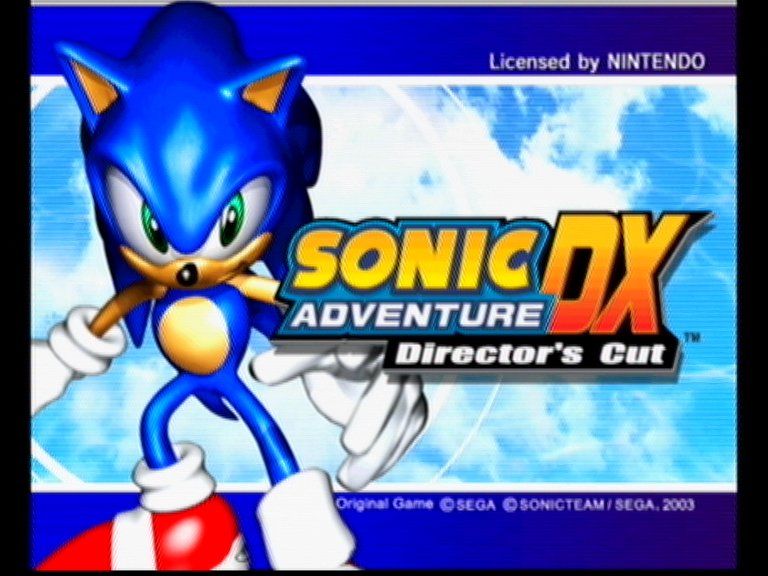
The first release of Sonic Adventure back in 1998 was of revolutionary scale in comparison to the games that preceded. The power of the Dreamcast (DC) allowed for a bigger, faster and better adventure game never before seen that reinstated Sonic as one of gaming coolest characters.
By 2003, after various machinations at SEGA and within the rest of the gaming world, Sonic and co. had made a stable home for themselves on Nintendo's Gamec`ube (GC). Sonic Team decide to re-release the game that bought the blue blur back from obscurity on this relatively new and moreover powerful platform.
The re-release included additional features and content dropped from the DC version due to time constraints as well as numerous bugs fixed. The resulting product was Sonic Adventure DX: Director's Cut (DX) and released on the GC in June 2003 with a PC port following later.
Unfortunately it did not score well with the gaming populous and it did not play particularly well against the DC original bizarrely giving the impression that Sonic Team seemingly wasted an opportunity to 'fully fix' an otherwise great game.
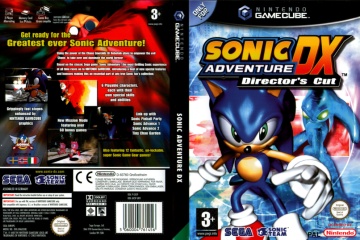 |
Click for larger |
For the most part, DX is an identical port of the DC version right down to the majority of glitches that plagued that game yet with a few additions here and there. None of the core gameplay is altered. Sonic and the other characters roam the Adventure Fields heading to their various Action Stages. For the full low down checkout the Sonic Adventure Feature.
What earns the DX postfix is a handful of extra features and bug fixes (which are in the game somewhere).
Graphically the game has improved marginally. The colours are very bright and the characters have slightly more details due to them being built with more polygons. One of the major issues of the DC version was the framerate with fluctuated. Unfortunately this is still the games and it now fluctuates anywhere between 15 and 60 frames per second which decent gamers are sensitive to. This is rather disappointing considering the GC is rather powerful in comparison and Sonic Adventure 2: Battle which had already been launched.
There is a little more voice over to be heard around the various menus.
 Adventure Field Map
Adventure Field Map
The camera angle can now be manipulated used the C analogue. Options for this are: Free and Auto. The default is Auto and provides a first-person perspective whereas Free will give more viewing surround the character.
Tasks in Adventure Fields are now assisted with a map function so it's possible to know where to go and/or doing.
Another inclusion is Metal Sonic as a playable character but with limitations. He will have to be unlocked after collection of all 130 emblems and then only playable in the Trial Mode. He has all of Sonic skills (special moves) and has access to all his trial stages / action stages.
A minor inclusion is the Cream The Rabbit can be glimpsed in Station Square leading up to the Ice Cap Action Stage. She hangs around the Ice Crystal Key and is just something for Sonic to look at.
The Chao Mini-Game has several enhancements. The Chao Gardens are slightly bigger with a few tweaks to their design. The Black Market is now accessible from the Station Square Garden.
With a Gameboy Advance (GBA), link cable and any game that features Chao no Puchi Garden (Sonic Adventure 2: Battle) then the pet Chao can be travelled with. By sending a Chao to a GBA without a cartridge there is then a special mini-game in which Cheese sends Sonic to search for particular Chao within a time limit. Hint orbs prompt Tikal give you info on where to find that Chao.
The showcase mode contains a range of missions for a specific character when the game has been completed with them. These are a series of goals to be completed in the Adventure Fields and Action Stages. When in an Adventure Field for a character, look for mission cards. Some are easily visible where are others will require a little exploration. The card will have a number and a hint of what needs to be performed. When the mission is completed the reward is an Emblem.
Probably, the major inclusion in DX is the Mini-Games which are actually Sonic's Game Gear (GG) games. For every 10 Emblems collected (in the main game or via missions) one of the twelve 8-Bit titles is unlocked. There are even the Japanese and US versions of these games.
One clever feature is that during a game a second controller can be plugged in and another window is opened. By pressing START and selecting Split Screen allows any of the GG titles that sported linkage will be synchronised for games with versus mode.
These are the games in order of unlock:
Click on any of the links to goto that feature.
The GG emulation is provided by a company called VR-1 Japan. They also developed the emulation for Sonic Mega Collection.
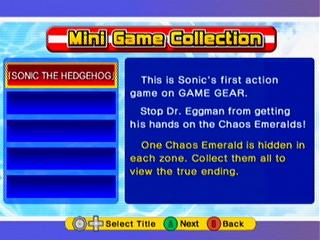

Mini-Games
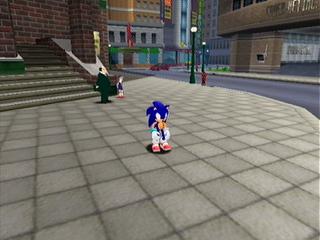 Station Square |
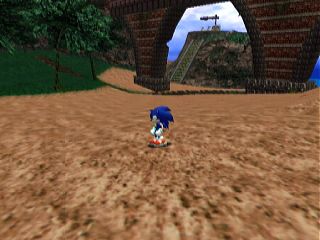 Mystic Ruins |
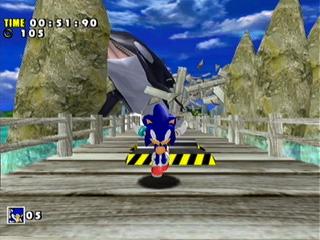 Emerald Coast |
 Windy Valley |
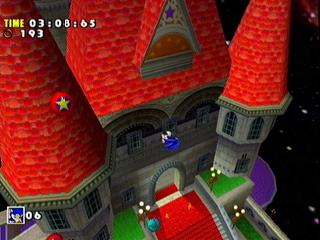 Twinckle Park |
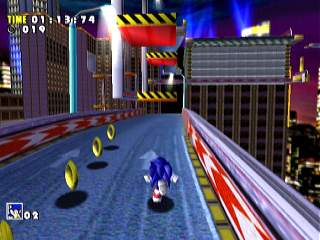 Speed Highway |
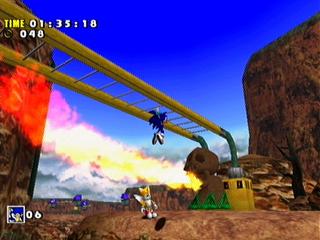 Red Mountain |
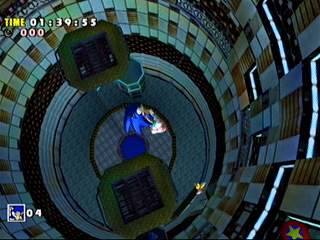 Final Egg |
Since there is very little difference in the versions a full gallery can be found on the Sonic Adventure Feature.
Six months after the release of the GC version the game was released for PC's by Soldout software. The port is identical [DX] and can benefit from PCs with more powerful hardware.
There are options for much higher resolutions, improved frame rate and tiny loading times with a full install.
The official system specifications are:
600Mhz CPU, 128MB RAM, 16MB Video RAM on a DirectX9 video card, x12 speed CDROM, DirectX9 sound card.
It will run on Windows 98, Me and XP.
For reference, on an Athlon XP 2500+ and a Geforce FX5200 at 1024x768 it flies. It is also available via Xbox Live, PSN and Steam.
The disc based version comes with bonus wallpapers and mouse pointers.
Sonic Adventure DX Wallpaper
Sonic Adventure Feature (Dreamcast)
Sonic 8-Bit Index (Game Gear and Master System)